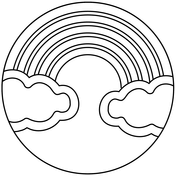Hello my friends of the Omschool! Teacher Omi (grandma) here with some easy, free trash craft projects to make with your recycle bin and some free printables. So I call these trash crafts because we reuse items that would probably get tossed in the trash. These are just right for Earth Month with an environmental focus on reduce, reuse, recycle and repurpose.
Today's trash craft projects feature ways to reuse plastic milk jugs. Here are ideas to make recycled milk jugs into sand toys for the beach and garden tools. Make a set of eight recycled sand toys and garden tools, just in time for spring break and summer fun. Homemade kids trash crafts from recycled materials are great for beach play. If they get broken, you're not out any money!
Repurpose and reuse recycled milk jugs for preschool, school, scout troop, 4H group, camp and day care kids crafts. These recycled kids crafts work well for small hands. And because you know I'm all about Montessori and homeschoolers, these activities are geared for the multiage classroom.
You'll need
-two clean plastic milk jugs per child
-permanent marker
-scissors (children's Fiskars scissors work great)
These crafts projects allow kids' to make a gardening bucket or plant starter with garden tools and a sand pail, strainer and sifter sand toys
To begin, draw a line around the base of your recycled milk jugs, about three inches from the bottom. Poke a hole anywhere in the line with sharp scissors. Cut along the line to remove the top half (set aside for later). Now you have a sand pail or gardening bucket or plant starter.
For sifter or strainer sand toys or garden tools, poke holes in the bottom of recycled milk jugs. Repurpose and reuse the remainder of recycled milk jugs for other sand toys and garden tools. Draw a circle around the top of the milk jugs, about two inches down from the mouth. Poke a hole and cut around the circle. Now you have a funnel or sand castle mold for beach sand toys.
With the leftover piece, you can make a trowel or shovel. To make a trowel, draw along the indentation on the jug where the handle is. Snip the lower end of the handle to separate it form the jug. Poke a hole on the line and cut along the line. Trim the top part above the upper end of the handle to a v-shaped point. You will have a flat surface with a handle to smooth out surfaces and a corner surface for edging. These garden tools make great hoes or trowels for a small garden or potted plant.
If you cut it with a zigzag edge it can be used as a garden rake. These simple kids crafts provide excellent scissors skills practice. Make a shovel by drawing a circle around the part where the lower end of the handle attaches to the jug, about an inch or so from the handle. Snip the top end off from the jug. Cut along the circle you've drawn. Now you have handled shovels to use for sand toys or garden.
I'll add pictures later when Omi and Opi finish the milk in the milk jug. 😀For more super easy, cheap or free kids trash crafts visit FreeKidsCrafts. You get free printable craft project patterns for all the crafts shownd.



















